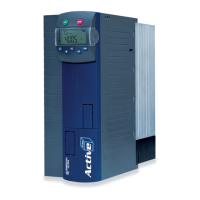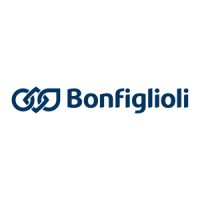7 Protocol
The Modbus/TCP communication protocol is a Client/Server based protocol. Modbus/TCP communica-
tion will always be initialized by the client (e.g. PLC). The server nodes (frequency inverters) do not
communicate with one another.
Modbus/TCP communication will be established by the client via the TCP/IP-Port #502 on the side of
the Modbus/TCP server.
-Modbus/TCP and CM-Modbus/TCP-2P only support
Port #502 for establishing Modbus/TCP connection
one request per transaction only (NumberMaxOfServerTransaction = 1)
7.1 Telegram structure
A Modbus/TCP telegram comprises the following fields:
Data
(Modbus RTU data contents)
MBAP Modbus Application Header
(transaction identifier)
bus request/response
client
server from the
(protocol identifier)
client
server from the
quent bytes (includ-
ing ID of data unit)
client (request)
(response)
(unit identifier)
ally connected Re-
client (request)
(response)
The data unit identifier will not be processed by the server.
The function code and data field structure are the same in Modbus/TCP and Modbus-
RTU.
Modbus/TCP uses byte sequence Big-Endian (Motorola format).
The function code tells the server/frequency inverter which action is to be performed. The function
code is followed by a data field containing the parameters of the request (or the response parameters
in the case of the response by the frequency inverter).
If there are no errors while a request is received via Modbus/TCP, the data field will contain the re-
quired data. If an error occurs, the field contains an exception condition code to tell the master that
the request was not processed successfully. For information on how to handle exception conditions
and the exception condition codes, refer to Chapter 7.2.9 “Exception condition codes”.
26
ACU
Modbus/TCP 10/13

